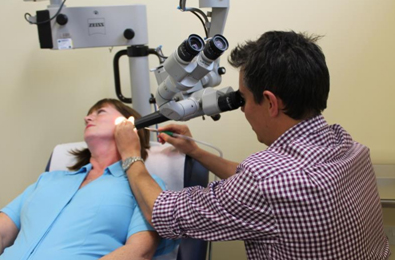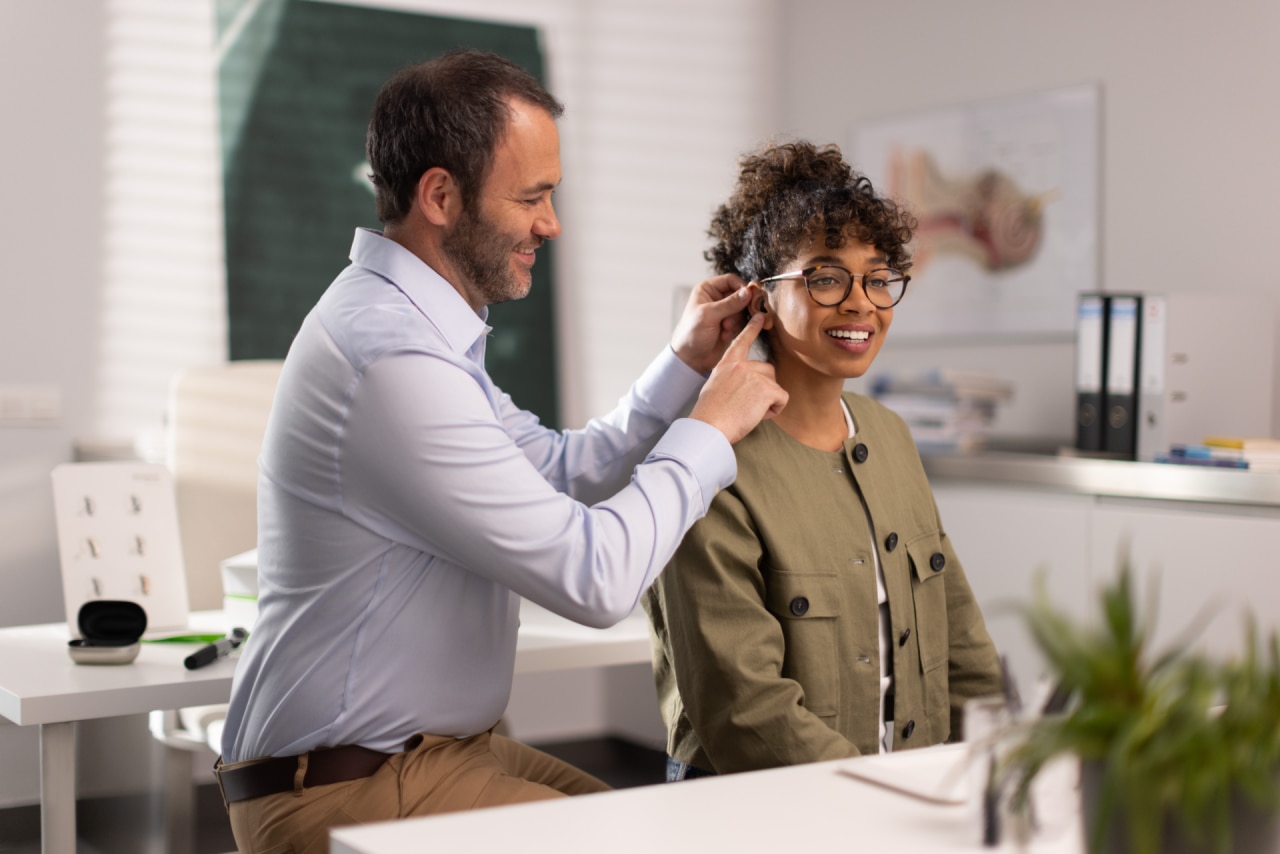hearing test

Having trouble following a conversation?
Although people of all ages can develop hearing loss , those over 50 are particularly affected. There can be numerous causes for hearing loss:
- Excess earwax
- Build-up fluid or skin cells
- Ear Infection
- Ageing
- Perforated eardrum
- Damage from long time exposure in loud noise
- Certain medicines can affect hearing.
What is a hearing test?
A hearing test measures the sensitivity of a person’s hearing across the range of speech, from low frequency to high frequency hearing.
The hearing test assesses the person’s ability to identify different tones, including in noisy environments where even people without hearing loss can find it difficult to understand conversations.

👂A Full Hearing Test Includes
👂Otoscopy examination
- To examine the external auditory canal for any abnormalities and blockages due to the presence of a foreign object or wax build up
- To evaluate the middle ear through the ear drum for any signs of rupture, puncture and infection.
👂Speech Audiometry
Unfortunately, when hearing is damaged it is usually not just the volume of sound that is softer, often the quality of the sound is also distorted. The amount of distortion can be measured using speech discrimination tests. People with the same degree of hearing loss may experience different degrees of difficulty hearing and understanding speech.
A speech test, which requires the patient to hear specific single words and repeat them back at various testing speech levels, allows us to understand your functional hearing which can reflect to real-life performance.
👂Pure Tone Audiometry
Pure tone audiometry, commonly referred as “hearing test”, is used to identify hearing threshold levels of an individual in order to determine the degree, type and configuration of a hearing loss.
For this test you listen to a range of beeps and whistles, and indicate when you can hear them. The loudness of each tone is reduced until you can just hear the tone. The softest sounds you can hear are your hearing thresholds.
👂Tympanometry
This is an examination used to test the condition of the middle ear and mobility of the eardrum (tympanic membrane) to identify possible middle-ear problem. It is helpful in detecting middle ear effusion, Eustachian tube dysfunction, tympanic membrane perforation, disruption of the ossicles, and otosclerosis.

Hearing tests for babies and children
Some babies are at increased risk of hearing problems. Risk factors include premature birth, low birth weight and jaundice. The type of hearing tests used depends on the age of the child:
- Objective tests – such as otoacoustic emission testing, auditory brainstem response testing, electrocochleography and tympanometry. These tests provide the most accurate indication of hearing ability in most babies aged under six months.
- Behavioural observation audiometry (BOA) – consists of making noises, such as shaking a rattle nearby, and then observing the baby’s response. Suitable for babies under seven months of age.
- Visual reinforcement orientation – the baby is taught to move their head towards sound by pairing it with an interesting visual stimulus. The baby will turn its head at the sound to can see the visual stimulus. Their response can then be measured. The ears can be tested individually if the baby will tolerate headphones.
- Play audiometry – older children are taught to respond to sounds by playing a game.
Signs you need to book a hearing test
- You ask people to repeat themselves. You are always telling people to speak more clearly.
- Ringing in the ears – Also called tinnitus, ringing in the ears can be an early sign of damage to the ear or hearing nerve.
- It sounds like people are mumbling – You can hear that someone is talking to you, but the words aren’t clear.
- Difficulty hearing in noisy places. Filtering out external sounds in a busy environment like a restaurant or a party is challenging.
- The volume is constantly turned up. You need to crank the TV to be able to hear dialogue or music comfortably, or you rely heavily on subtitles.
- Family members keep telling you that you need a hearing test. Many people with hearing loss do not realize they are missing out on sounds or conversation.
- You feel fatigued and need to exert extra effort to hear at public events. Your body feels strained and your neck or back may feel tight from twisting and tensing.


What to expect during a hearing test
Hearing is a complex process and to assess it comprehensively, our audiologist uses a sequence of tests to diagnose any possible hearing problems.
You DO NOT need a medical referral for a hearing test.
All our hearing tests are performed by qualified and experienced audiologists:
- First, our audiologist will look inside your ears to check if there is excess wax, fluid, or infection.
- Then, our audiologist will perform an objective middle ear function measuring energy transmission through the middle ear.
- Finally, our audiologist will ask you to identify a variety of sounds and pitches in both ears. You will also be asked to repeat a series of words to measuere your speech understanding.
The results will be reviewed. Referrals are made to an ear, nose, and throat physician or otolaryngologist if needed.
What to expect after the hearing test
Your audiologist will find the best choice for you based on your hearing test result.
- Hearing protection – Everyone should use hearing protection such as custom earplugs when exposed to loud sounds.
- Hearing aids – If the test shows a hearing loss, our audiologist may recommend hearing aids. Rest assured our audiologist can help you find the best choice.
- Medical referral – Sometimes the hearing test may suggest a medical problem with the ear that should be evaluated by a physician or otolaryngologist.
- Our audiologist will provide you some tips for reducing tinnitus and improving communication.

AUDIOLOGY SERVICES
- Hearing Test
- Hearing Loss- Sudden Hearing Loss
- Dementia & Hearing Loss
- Hyperacusis & Sensitivity to Sounds
- Tinnitus
- Vertigo
- Dizziness
- Hearing Aids
- Invisible Hearing Aids
- Hearing Aid Repair
- Free Pensioners & Veterans Hearing Aids
- Hearing Aid Batteries
- Hearing Services
- Ear Wax Removal
- Custom Ear Plugs
- Work Cover Services
- Industrial Hearing Test
- Hearing Aid Prices
AUDIOHEARING MELBOURNE CLINICS
- South Yarra
- Brighton
- Doncaster
- Armadale
- Prahran Malvern Road
- Prahran High Street
- St Kilda East
- Box Hill
- Balwyn
